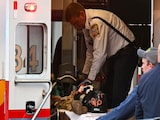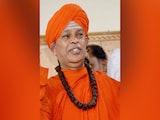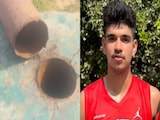- The HOPE analogue mission facility in Ladakh simulates Mars-like conditions at 4.3 km altitude
- Protoplanet and ISRO's Human Space Flight Centre lead the mission supporting crewed lunar landing
- The facility includes habitat and utility modules for crew living and operational support systems
The cold desert of Ladakh sometimes also referred to as the 'moonscape' is now home to a facility that will mimic living conditions of humans as if they were on Moon or Mars. In a significant moment for India's human spaceflight ambitions, Dr V Narayanan, Chairman of the Indian Space Research Organisation (ISRO), inaugurated the Himalayan Outpost for Planetary Exploration (HOPE) analogue mission setup in Ladakh. The facility, located at an altitude of 4.3 kilometres above sea level, is designed to simulate Mars-like conditions and will serve as a testbed for future crewed missions to the Moon and beyond.
"This analogue mission is more than a simulation, it is a rehearsal for the future," said Dr V Narayanan. "It will help us understand the psychological and physiological aspects of human spaceflight, and it is a major milestone in our journey toward sending Indians to the Moon".
The HOPE analogue mission is part of a broader national endeavour spearhead by Protoplanet, a private space company, headquartered in Bengaluru and supported by ISRO's Human Space Flight Centre (HSFC), which is leading India's efforts to extend human presence into Low Earth Orbit (LEO) and eventually achieve a crewed lunar landing by 2040.
The 20 day mission to the International Space Station by Astronaut Group Captain Shubhanshu Shukla cost India nearly Rs 550 crores while a simulation facility where almost everything except simulating micro-gravity has been erected at a cost of Rs 1 crore by Protoplanet and its partners. These analogue facilities as they are called are great tests beds especially to analyse human behaviour in isolation.
The analogue mission setup in Ladakh includes a specially designed eight-meter diameter habitat module for crew living and a five-meter diameter utility module for operations and support systems. These modules are interconnected to enable seamless crew workflows and planetary surface operations.
The Tso Kar Valley was chosen for its striking environmental parallels with early Mars, high ultraviolet flux, low air pressure, extreme cold, and saline permafrost, making it an ideal location to simulate extra-terrestrial conditions. "The situation there is similar to the Mars habitat," noted Dr V Narayanan. "That is what my colleagues have explained to me. I am yet to visit the facility myself, but I plan to do so soon to review it in detail", he told NDTV.
Protoplanet, a leading space technology innovator, says this landmark initiative marks a significant step forward in human space exploration, with a focus on understanding the physiological and psychological aspects of long-duration space travel. Mahindra Automobiles, a pioneer in sustainable and advanced mobility solutions, has been named the official mobility partner for the HOPE mission's initial phase.
Following the inauguration, a 10-day HOPE analogue mission is being conducted from August 1 to 10, 2025, in partnership with national institutions such as the Indian Institute of Space Science and Technology (IIST), Rajiv Gandhi Centre for Biotechnology (RGCB), IIT Hyderabad, IIT Bombay, and the Institute of Aerospace Medicine, Bangalore. Investigators from these institutions will study epigenetic, genomic, physiological, and psychological responses of two analogue crew members. The mission will also validate health-monitoring protocols, refine sample collection techniques, and test microbial analysis methods.
"This facility will be helping us mainly in the human spaceflight activities," emphasised Dr V Narayanan. "Originally, only one crewed space mission was approved. Now, thanks to the Prime Minister, eight missions have been sanctioned, including two crewed missions and the development of the Bharat Antariksha Station module in space. We are also working on docking experiments and a crewed lunar mission. All these facilities like this one in Ladakh will be really helping".
The HOPE analogue mission follows two earlier initiatives led by HSFC, the Ladakh Human Analog Mission (LHAM) in November 2024 and the ten-day isolation study 'Anugami' involving ISRO's Gaganyatri Astronaut Group Captain Angad Pratap in July 2025, done in Bengaluru. These missions are part of a systematic effort to generate Indian subject data to address the physiological, psychological, and operational challenges of human spaceflight.
In line with Prime Minister Narendra Modi's vision to open up the space sector to greater industry participation, the HOPE mission also marks a new era of public-private synergy. The analogue mission is being conducted in collaboration with an industry partner Protoplanet, showcasing the evolving landscape of India's space ecosystem.
"This is going to be a very major facility," said Dr V Narayanan. "It will be helping us in a big way, especially in simulating most aspects of space missions except microgravity".
Protoplanet's efforts at Tso Kar have been significantly bolstered by the invaluable support and expertise from The Mars Society and Mars Society Australia. Both organisations have extensive experience in building and operating highly successful analogue stations in diverse environments, including the deserts of the United States and the Arctic. Their collaboration has been crucial in establishing Tso Kar as a world-class facility for space analogue research.
As India prepares for its ambitious human spaceflight roadmap, including the Gaganyaan mission, a space station by 2035, and a crewed lunar landing by 2040, the HOPE analogue mission stands as a critical stepping stone. It offers a unique opportunity to test technologies, study crew dynamics, and refine operational protocols in a controlled yet challenging environment.
"This is a rehearsal for the future," says Dr V Narayanan. "It is essential for our human space programme leading up to sending a human to the Moon."















